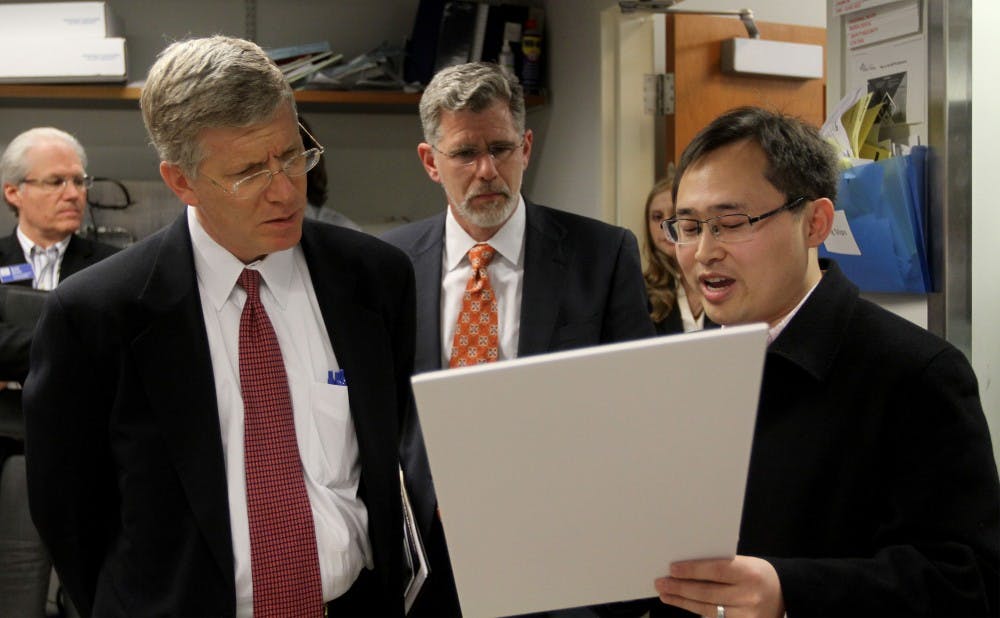Daniel Poneman, deputy secretary of energy to the Obama administration, visited engineering laboratories and spoke about the importance of research on energy alternatives during his visit to Duke on Monday.
Poneman spent the afternoon touring various laboratories in the Pratt School of Engineering where he learned of student innovation on topics ranging from mass spectroscopy to hydropower efficiency. He then went on to deliver a speech on energy security to an audience at the Sanford School of Public Policy. The Duke Energy Initiative, a multidisciplinary collective that studies global energy systems, sponsored the Deputy’s visit.
“When you get out of Washington, you see some of the great work that’s going on in places like this,” Poneman said. “It makes you feel like, even though these are incredibly portentous and daunting challenges, there is a path forward.”
Previously a Director of Defense Policy and Arms Control for the National Security Council, Poneman has served as the Deputy Secretary of Energy since April 2009. He watched as President Obama announced his Climate Action Plan last summer, which emphasizes the need for mitigation, adaptation and international cooperation in the global fight against climate change.
During his talk in Sanford, Poneman also spoke of some of the triumphs the plan has spurred thus far — most notably, advancement towards the goal of reducing greenhouse gas emissions by 17 percent by 2020, an increase in wind and solar energy production nationwide and growth in the natural gas market that has stimulated job creation. He cited the private sector’s support for clean energy technologies as a major driver of this progress.
“The idea was not to displace the private sector but rather to coax it back into a willingness to invest in these assets,” he said.
Poneman noted during his address that there is a long road ahead for energy reform, which he hopes will be made smoother by individual innovation like the kind he witnessed on his laboratory tours.
"It’s great to see young people working on cutting-edge research with far reaching effects,” he said during his visit to the Smith, Glass and Brady laboratories.
Students and faculty working in these labs presented their findings on electromagnetism, thin-film solar energy and high-resolution imaging, respectively. The Brady Lab showed Poneman their image technology which could potentially be used to capture open-air events in unparalleled quality. They further explained that, in a more practical sense, their innovations could ultimately be used to increase the amount of information the TSA obtains from security checkpoint images.
Poneman finished his Sanford address by reading a letter addressed to the Smithsonian Institution in 1899. The author of the letter claimed that human flight was possible and merely a matter of knowledge and skill. They go on to ask for any Smithsonian records that may be useful in the development of a flying device. The author then asked for access to Smithsonian records that could aid in the development of a flying device.
Poneman then revealed that Wilbur Wright wrote the letter four years before the first powered flight, and he described the letter as a testament to the power of human innovation and perseverance.
“Don’t tell me that one person can’t make a difference,” he said.
Get The Chronicle straight to your inbox
Sign up for our weekly newsletter. Cancel at any time.

